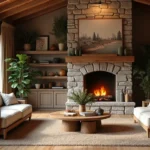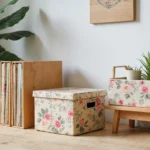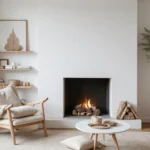We’re witnessing a kitchen revolution that’s reshaping how we cook, connect, and create in our homes. The kitchen trends for 2025 aren’t just about aesthetics—they’re transforming our most essential living space into smarter, more sustainable, and incredibly functional environments that adapt to our evolving lifestyles.
From cutting-edge smart appliances that anticipate our needs to bold design choices that make powerful statements, this year’s trends reflect our desire for kitchens that work harder and look better than ever before. We’re seeing a fascinating blend of high-tech innovation and timeless craftsmanship that’s redefining what it means to have a modern kitchen.
Whether you’re planning a complete renovation or looking for strategic updates, these emerging trends offer exciting opportunities to create a space that’s not only on-trend but perfectly customized to how you live and entertain. Let’s explore the game-changing kitchen trends that’ll dominate 2025.
Smart Kitchen Technology Takes Center Stage in 2025
Technology transforms our kitchens into intelligent hubs that anticipate our needs and streamline daily cooking routines. Modern homeowners embrace these innovations to create more efficient and enjoyable culinary experiences.
Voice-Activated Appliances and Smart Home Integration
Voice controlled refrigerators now respond to simple commands like “add milk to my shopping list” or “show me what’s expiring this week.” These smart appliances connect seamlessly with home automation systems, allowing us to preheat ovens, adjust dishwasher cycles, and monitor cooking progress from anywhere in the house.
Smart ovens integrate with popular voice assistants like Alexa and Google Assistant, enabling hands free operation when our hands are messy from food preparation. We can set timers, adjust temperatures, and receive cooking notifications without touching a single button.
Connected dishwashers automatically order detergent when supplies run low and send alerts to our smartphones when cycles complete. This integration extends to smart garbage disposals that self diagnose maintenance needs and refrigerators that suggest meal plans based on available ingredients.
AI-Powered Cooking Assistants and Recipe Recommendations
Artificial intelligence revolutionizes meal planning by analyzing our dietary preferences, cooking history, and available ingredients to suggest personalized recipes. Smart kitchen displays now feature AI assistants that guide us through complex cooking techniques with step by step video instructions.
Machine learning algorithms track our cooking patterns and adjust recipe recommendations based on seasonal ingredients, nutritional goals, and time constraints. These systems learn from our feedback to improve future suggestions and can even modify recipes to accommodate dietary restrictions or ingredient substitutions.
Smart scales equipped with AI technology identify ingredients automatically and provide real time nutritional information while we cook. We receive instant feedback on portion sizes and can track caloric intake without manual input.
Touchless Faucets and Motion-Sensor Lighting
Motion activated faucets eliminate the need to touch handles with dirty hands during food preparation, reducing cross contamination and improving kitchen hygiene. These fixtures feature customizable flow rates and temperature settings that we can adjust through smartphone apps.
Sensor powered lighting systems automatically illuminate work surfaces when we approach and dim when we step away, creating optimal visibility while conserving energy. Under cabinet LED strips now respond to hand gestures, allowing us to adjust brightness levels without interrupting cooking tasks.
Smart lighting networks sync with our daily routines, gradually brightening during morning coffee preparation and switching to warmer tones for evening cooking sessions. We can create custom lighting scenes for different activities like meal prep, dining, or entertaining guests.
Sustainable and Eco-Friendly Kitchen Materials Dominate
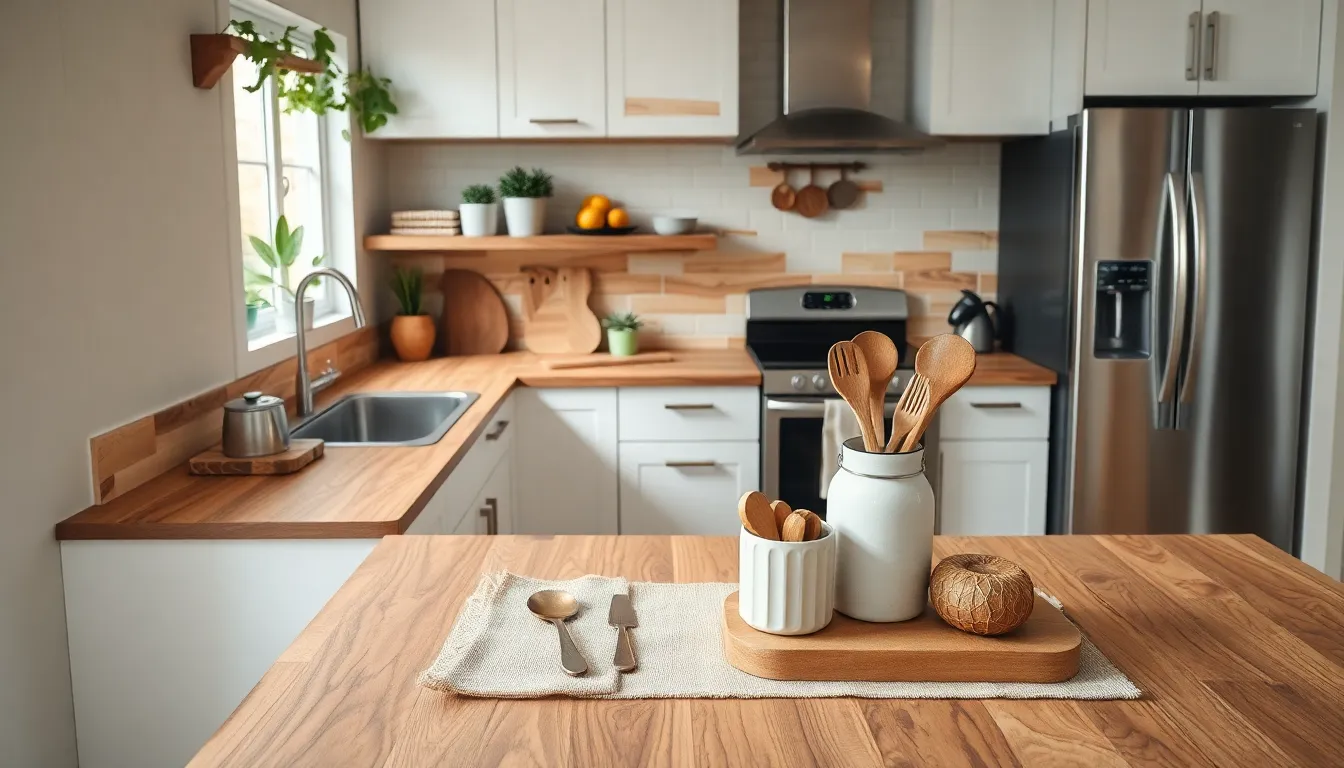
Sustainability takes center stage in 2025 kitchen designs as the National Kitchen & Bath Association emphasizes eco-friendly materials and practices. Homeowners are making conscious choices that reduce environmental impact while creating beautiful, functional spaces.
Recycled and Reclaimed Wood Countertops
Recycled wood countertops offer a striking alternative to traditional stone surfaces. These sustainable options transform salvaged materials from old barns, warehouses, and demolished buildings into stunning work surfaces. We’re seeing increasing demand for reclaimed teak, oak, and pine that showcase unique grain patterns and weathered character.
Reclaimed wood surfaces provide exceptional durability when properly sealed and maintained. Each piece tells a story through its natural imperfections like nail holes, saw marks, and color variations that create one-of-a-kind countertops. Installation costs range from $40 to $100 per square foot depending on wood species and condition.
Environmental benefits make recycled wood an attractive choice for eco-conscious homeowners. Using reclaimed materials prevents deforestation while diverting waste from landfills. These countertops also offer natural antibacterial properties and can be refinished multiple times throughout their lifespan.
Energy-Efficient Appliances with ENERGY STAR Ratings
ENERGY STAR certified appliances lead the way in reducing kitchen energy consumption. These units use 10-50% less energy than standard models while delivering superior performance. We’re witnessing important adoption as consumers seek to lower utility bills and environmental impact.
Smart refrigerators with ENERGY STAR ratings offer advanced features without energy waste. Modern units include precise temperature controls, vacation modes, and efficient compressors that maintain optimal cooling. Top performers can save homeowners $300-500 annually on electricity costs.
Induction cooktops represent the pinnacle of energy-efficient cooking technology. These appliances transfer 85-90% of energy directly to cookware compared to 40-55% for gas ranges. Professional grade induction units now include features like bridge elements and precise temperature control for serious home cooks.
Compostable and Biodegradable Kitchen Accessories
Compostable dish sponges made from natural loofah and cellulose replace synthetic alternatives. These eco-friendly options break down completely in home compost systems within 30-60 days. We’re seeing brands like Scotch-Brite and Full Circle introduce plant-based cleaning tools that perform as well as traditional versions.
Biodegradable food storage bags provide guilt-free convenience for meal prep and leftovers. Made from cornstarch and plant-based polymers, these bags decompose in industrial composting facilities within 90-180 days. Popular brands include BioBag and ETSUS that offer various sizes for different storage needs.
Natural fiber dish towels and pot holders replace synthetic textiles in sustainable kitchens. Organic cotton, linen, and hemp accessories provide superior absorbency while lasting longer than conventional options. These materials can be composted at end of life rather than contributing to textile waste streams.
Bold Color Palettes Replace Traditional Neutrals
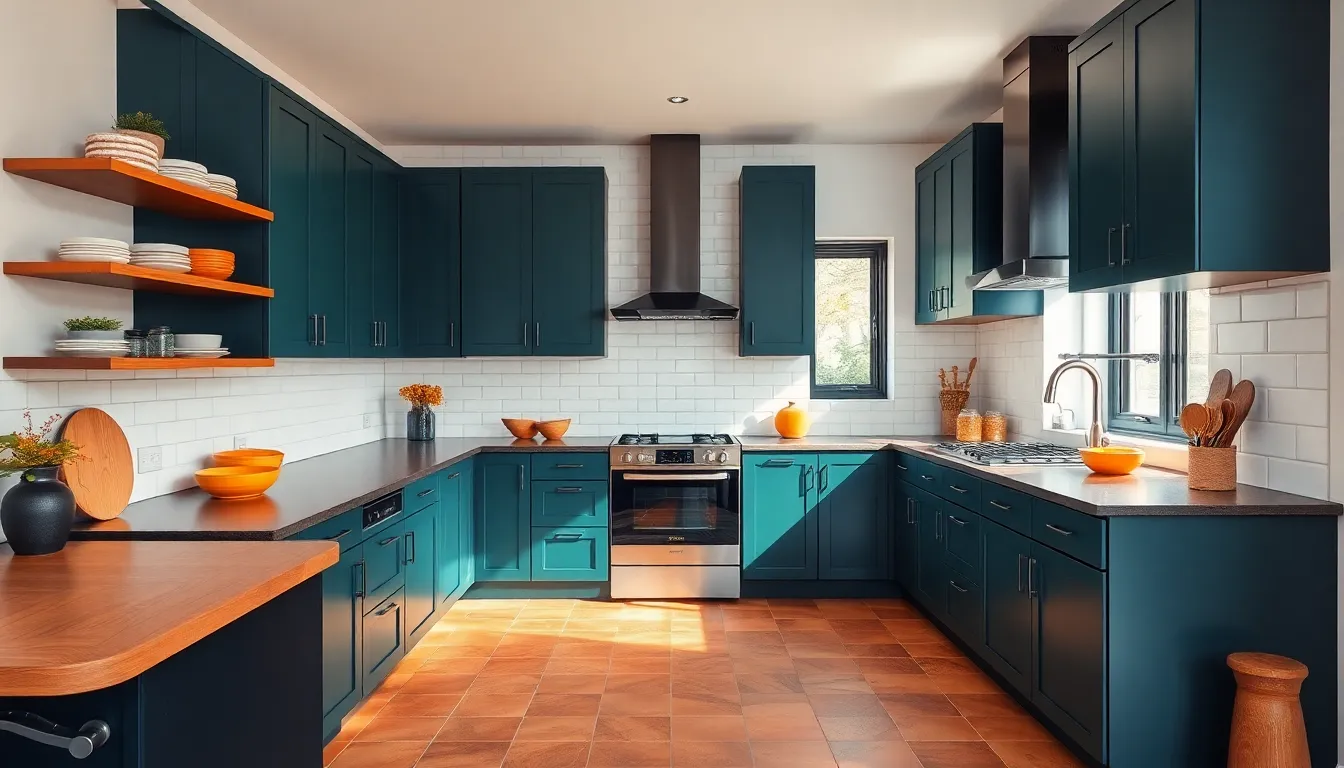
We’re witnessing a dramatic shift away from the beige and white kitchens that dominated previous decades. Bold color palettes are taking center stage, transforming kitchens into statement spaces that reflect personal style and create more ever-changing cooking environments.
Deep Forest Greens and Ocean Blues
Deep forest greens are becoming the go-to choice for homeowners seeking to bring nature indoors. These rich, earthy hues create a calming atmosphere that connects us to the outdoors while maintaining sophistication. Cabinet faces painted in deep emerald or sage tones instantly transform ordinary kitchens into luxurious retreats.
Ocean blues complement forest greens beautifully, offering versatility that works with both modern and traditional design elements. Navy blue islands paired with lighter blue backsplashes create depth and visual interest without overwhelming the space. We’re seeing these natural color combinations throughout kitchen designs, from cabinetry to accent walls.
Warm Terracotta and Burnt Orange Accents
Warm terracotta tones are making their mark as statement pieces in 2025 kitchen designs. These earthy colors add instant coziness to modern spaces while maintaining a timeless appeal that won’t feel dated in years to come. Backsplash tiles in warm terracotta create stunning focal points behind ranges and prep areas.
Burnt orange accents provide the perfect complement to terracotta bases, offering pops of color through bar stools, pendant lighting, or decorative accessories. Kitchen islands painted in these warm hues become natural gathering spots that invite conversation and connection. We’re incorporating these colors strategically to avoid overwhelming the space while maximizing their cozy impact.
Dramatic Black and Charcoal Finishes
Dramatic black finishes are revolutionizing kitchen aesthetics by creating bold contrasts that modernize traditional spaces. Matte black cabinetry paired with brass hardware delivers a sophisticated look that feels both contemporary and timeless. These dark colors make other design elements pop, from white countertops to colorful backsplashes.
Charcoal finishes offer a softer alternative to pure black while maintaining the same dramatic impact. Appliances in charcoal tones blend seamlessly with dark cabinetry, creating cohesive designs that feel intentional and polished. We’re using these darker colors to ground kitchen designs and create visual anchors that define separate zones within open floor plans.
Mixed Metal Finishes Create Visual Interest

The kitchen hardware industry is embracing complexity in 2025, with mixed metal finishes leading the charge toward more ever-changing and layered design aesthetics. We’re witnessing a sophisticated approach to metallic elements that breaks traditional matching rules.
Brass and Copper Hardware Combinations
Brass cabinet pulls paired with copper accents create warmth that transforms ordinary kitchens into inviting gathering spaces. We recommend using brushed brass for larger elements like cabinet handles while incorporating copper through smaller details such as pot racks and decorative hooks. This combination works exceptionally well with medium and dark wood tones, amplifying the cozy atmosphere that brown kitchen trends are bringing to 2025 design.
Consider mixing brass drawer pulls with copper pendant light fixtures above kitchen islands for maximum visual impact. The subtle color variations between these metals add depth without creating overwhelming contrast, making this pairing perfect for homeowners seeking sophisticated warmth.
Matte Black and Brushed Gold Pairings
Matte black hardware creates striking contrast when combined with brushed gold accents throughout modern kitchen spaces. We suggest using matte black for primary cabinet hardware while introducing brushed gold through faucets, light fixtures, and decorative elements. This dramatic pairing aligns perfectly with the color drenching trend, where bold choices define kitchen personality.
The key to mastering this combination lies in balance and proportion. Use matte black as your dominant metal finish covering approximately 70% of hardware elements, then strategically place brushed gold accents to highlight exact areas like the kitchen sink or breakfast bar.
Stainless Steel with Warm Bronze Accents
Stainless steel appliances gain new life when paired with warm bronze cabinet hardware and lighting fixtures. We’re seeing this combination particularly shine in concealed kitchen designs where built-in appliances blend seamlessly with cabinetry. The cool tones of stainless steel provide a perfect backdrop for bronze’s rich, earthy warmth.
This pairing works especially well in biophilic kitchen designs where natural elements take center stage. Bronze accents echo the organic qualities of wood and stone, while stainless steel maintains the clean, contemporary aesthetic that 2025 kitchens demand. Focus on using warm bronze for handles, knobs, and accent lighting to create cohesive visual flow throughout the space.
Maximalist Storage Solutions Optimize Space
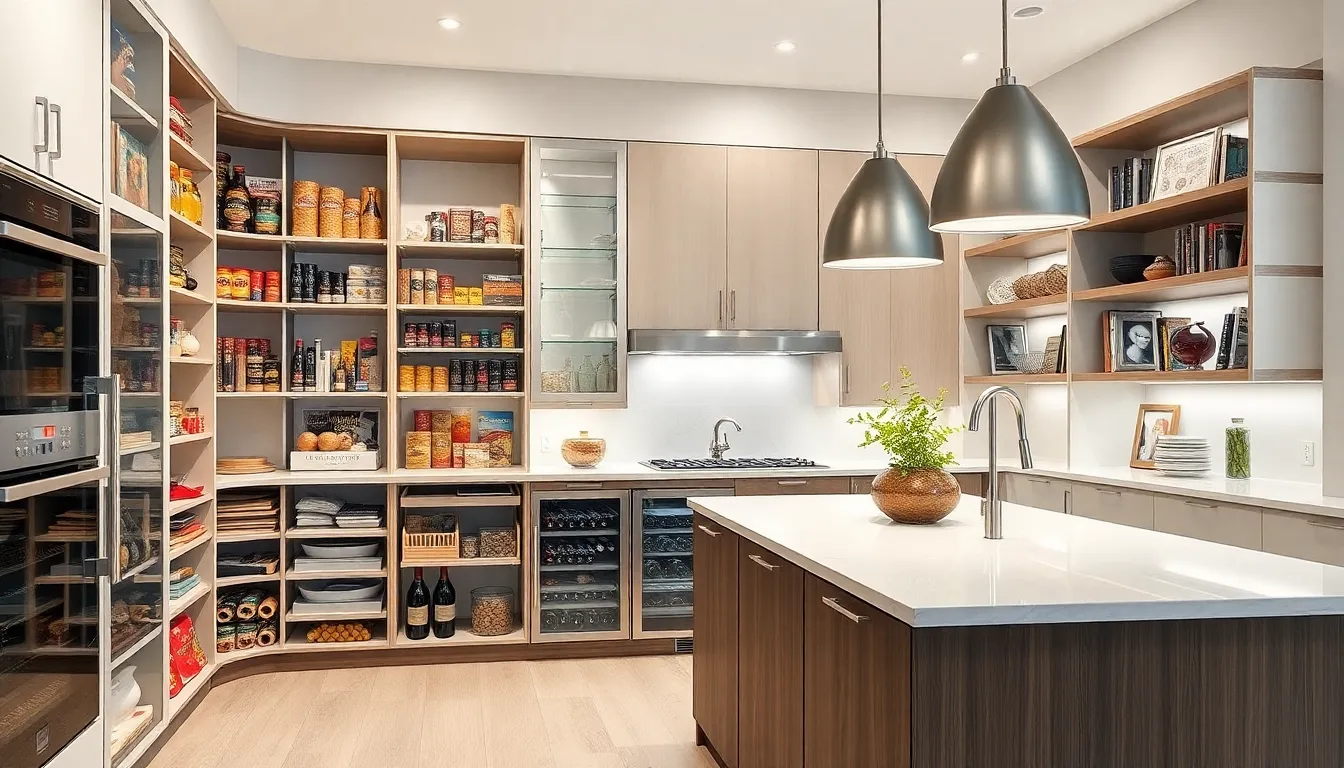
Maximalist storage answers are revolutionizing kitchen organization by emphasizing efficient use of every available inch. We’re seeing homeowners embrace comprehensive storage systems that eliminate wasted space while maintaining clean, organized environments.
Floor-to-Ceiling Pantry Systems
Floor to ceiling pantry systems maximize vertical space utilization by extending storage from floor to ceiling height. These comprehensive storage answers typically include adjustable shelving that accommodates items of varying sizes, from small spice jars to large cereal boxes and kitchen appliances.
Modern pantry systems integrate pull out shelves at different heights to ensure easy access to stored items. We recommend installing LED strip lighting throughout these tall pantry units to illuminate every shelf level effectively.
Custom pantry configurations can include dedicated zones for different food categories like canned goods, baking supplies, snacks, and beverages. Wire basket inserts provide excellent visibility for produce storage while maintaining proper air circulation.
Hidden Pull-Out Drawers and Compartments
Hidden pull out drawers conceal storage answers within existing cabinetry to reduce visual clutter throughout the kitchen. These concealed compartments use dead space behind cabinet doors and inside base cabinets that would otherwise remain unused.
Deep drawer systems beneath kitchen islands house large pots, mixing bowls, and small appliances while keeping countertops clear. Corner cabinet answers with rotating carousel mechanisms make previously inaccessible spaces fully functional for storage.
Toe kick drawers beneath base cabinets provide additional storage for flat items like baking sheets, cutting boards, and serving platters. Cabinet door mounted organizers maximize the interior space of cabinet doors with spice racks, cleaning supply holders, and trash bag dispensers.
Multi-Functional Island Storage Features
Multi functional island storage features integrate multiple purposes within a single kitchen element to maximize both storage capacity and workspace efficiency. These islands combine traditional storage with specialized compartments for wine, dishes, and small appliances.
Built in wine refrigeration units occupy lower island sections while maintaining easy access for entertaining. Open shelving displays frequently used items like cookbooks, decorative bowls, and everyday dishware within easy reach.
Breakfast bar seating areas incorporate hidden storage compartments beneath seats for table linens, placemats, and casual dining accessories. Electrical outlets built into island surfaces power small appliances directly at the workspace, eliminating countertop cord clutter.
Pull out trash and recycling centers keep waste management systems concealed while remaining easily accessible during meal preparation. Islands with varying counter heights create distinct zones for food preparation, casual dining, and assignments or office tasks.
Open Shelving and Display Areas Showcase Personality
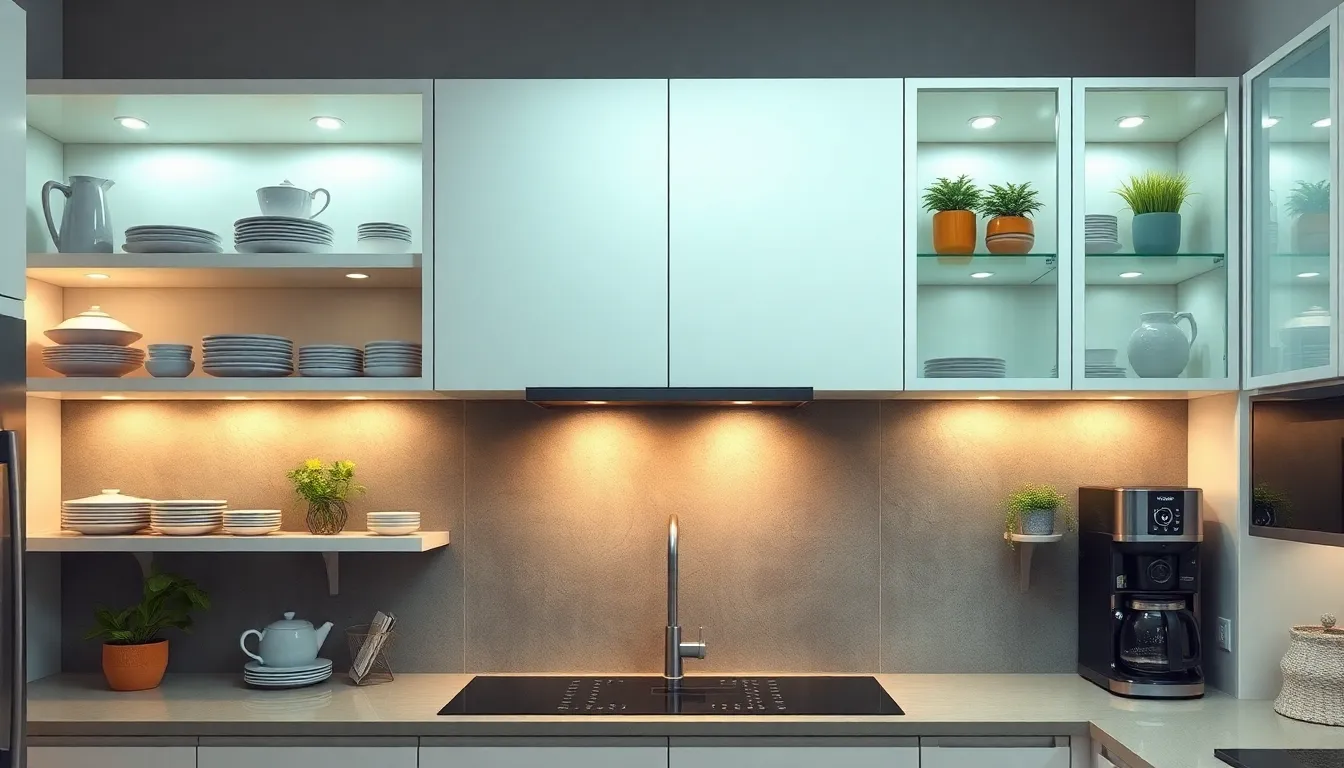
We’re witnessing a important shift toward expressive kitchen design that transforms cooking spaces into personalized galleries. Open shelving encourages homeowners to curate collections of dishes, cookbooks, and decorative items that tell their unique stories.
Floating Shelves with Integrated Lighting
Floating shelves combine minimalist aesthetics with practical functionality through integrated lighting systems. LED strips positioned beneath shelves highlight displayed items while providing essential task lighting for food preparation. Under shelf lighting creates ambient atmosphere that makes kitchens feel more inviting during evening hours.
Installation becomes straightforward when you choose shelves designed with built-in lighting channels. These systems eliminate the need for visible wiring while maintaining clean lines that complement modern kitchen designs. Homeowners can adjust brightness levels to match different occasions from intimate dinner preparation to lively entertaining.
Display versatility increases dramatically with proper lighting placement that showcases glassware, ceramics, and artwork effectively. The illumination draws attention to carefully curated collections while creating visual depth throughout the cooking space.
Glass-Front Cabinets with Interior Styling
Glass front cabinets offer the perfect balance between open and closed storage answers for discerning homeowners. Interior styling with color coordinated tableware creates organized visual interest that makes kitchens feel more connected. Plants positioned inside glass cabinets add natural elements that soften hard surfaces.
Styling techniques focus on creating layers using different heights and textures within cabinet interiors. Glassware arrangements benefit from strategic placement that allows light to filter through transparent materials. Color coordination extends beyond matching dishes to include complementary accessories that enhance the overall design narrative.
Maintenance remains manageable when you select items specifically for display purposes rather than daily use. This approach keeps interiors looking pristine while providing easy access to special occasion pieces.
Dedicated Coffee and Bar Display Zones
Dedicated beverage stations have become essential elements in modern kitchen design that enhance social appeal. Coffee machine placement on open shelving creates stylish focal points that celebrate morning rituals. Bar essentials displayed in glass front cabinets transform everyday beverage preparation into sophisticated experiences.
Design allocation for these zones considers both functionality and visual impact within the broader kitchen layout. Mug collections arranged on floating shelves provide easy access while contributing to the overall aesthetic story. Wine glasses and cocktail accessories positioned at appropriate heights encourage entertainment while maintaining organized appearances.
Social functionality increases when beverage stations become conversation starters that invite guests to participate in preparation rituals. These dedicated areas reflect the growing importance of kitchens as gathering spaces that extend beyond traditional cooking activities.
Textured Surfaces and Natural Materials Add Warmth
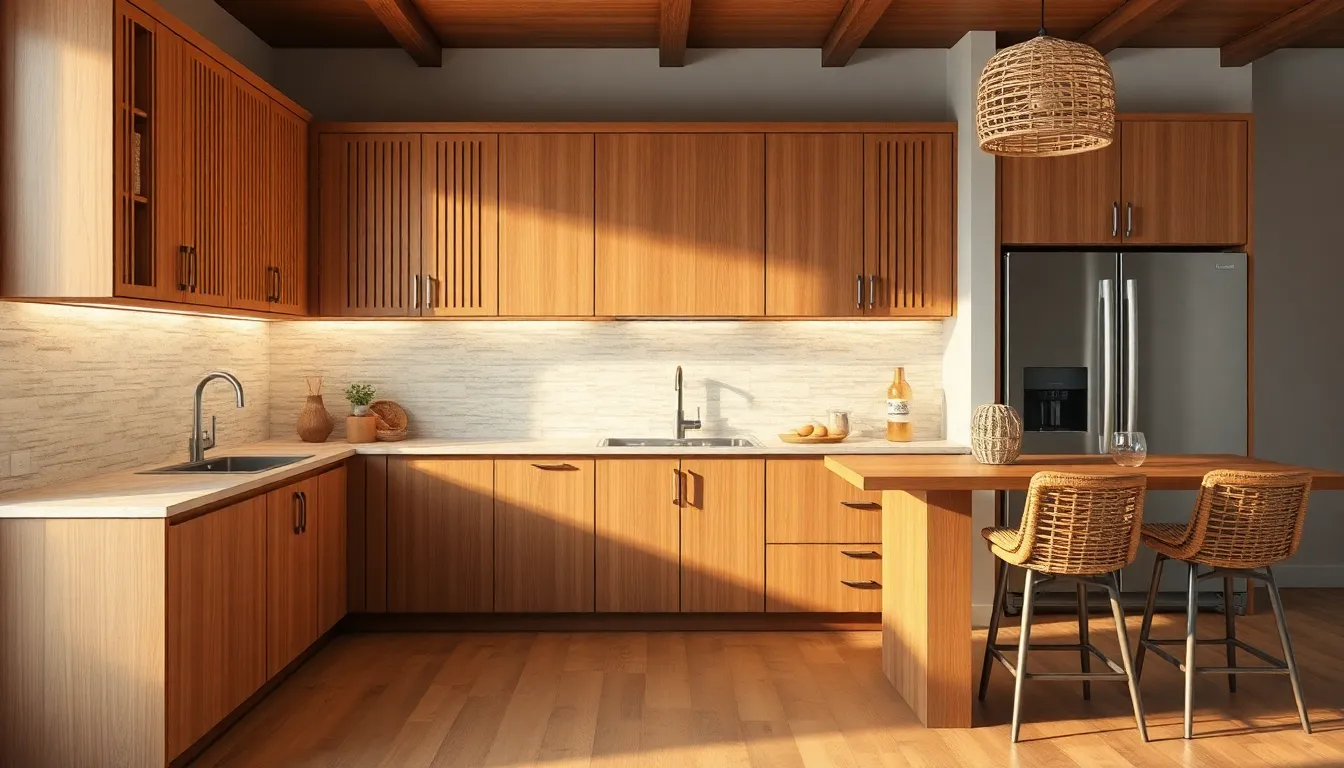
Tactile elements and organic materials are revolutionizing kitchen design by creating cozy atmospheres that connect us with nature. These trending textures transform sterile cooking spaces into inviting environments where functionality meets visual appeal.
Fluted Wood Cabinet Fronts
Fluted wood cabinet fronts introduce vertical texture patterns that add visual interest while maintaining clean modern lines. These ridged surfaces create shadow play throughout the day as natural light shifts across their grooves and channels. Medium to dark wood tones dominate this trend, bringing warmth that balances contemporary stainless steel appliances and sleek countertops.
Installing fluted cabinet doors on kitchen islands creates focal points that draw attention without overwhelming the space. The vertical lines make ceilings appear higher while adding sophisticated texture that complements both traditional and modern design schemes. Oak, walnut, and cherry woods work exceptionally well for this application, offering durability alongside their natural beauty.
Natural Stone Backsplashes and Countertops
Natural stone surfaces bring timeless elegance to kitchens through their unique veining patterns and organic textures. Quartzite, marble, and granite slabs offer distinct personalities while providing heat resistance and durability for busy cooking areas. Each stone tells its own geological story through color variations and mineral deposits that create one-of-a-kind installations.
Rough-hewn stone backsplashes contrast beautifully with polished countertops, creating layered textures that catch light differently throughout the space. Travertine and limestone options provide softer appearances for homeowners seeking subtle earth tones, while dramatic granite and marble selections make bold statements. These materials age gracefully, developing patinas that enhance their natural character over time.
Woven Rattan and Cane Accents
Woven rattan and cane elements introduce organic textures through pendant lights, bar stools, and decorative accessories that soften hard kitchen surfaces. These natural fibers add warmth through their honey and amber tones while creating visual breaks between metal and stone elements. Rattan cabinet door inserts provide ventilation for pantry storage while maintaining aesthetic appeal.
Cane webbing applications on kitchen islands and dining nooks create tropical resort vibes that feel relaxed yet refined. The handcrafted quality of these woven materials adds artisanal touches that mass-produced items cannot replicate. Pendant lights featuring rattan shades cast intricate shadow patterns that enhance the cozy atmosphere while providing functional task lighting for food preparation areas.
Multi-Functional Kitchen Islands Serve Multiple Purposes

Kitchen islands are evolving beyond simple preparation spaces into comprehensive workstations that address multiple household needs. We’re seeing these versatile structures serve as cooking areas, storage answers, and social hubs all within a single design element.
Built-In Seating and Dining Areas
Integrating dining spaces directly into kitchen islands transforms cooking from a solitary activity into a social experience. We’re observing homeowners incorporate counter-height seating that allows family members and guests to engage with the cook while meals are being prepared. Bar stools positioned along extended island countertops create casual dining spots perfect for quick breakfasts or afternoon snacks.
Built-in banquette seating maximizes space efficiency while providing comfortable dining arrangements. These permanent seating answers often include hidden storage compartments beneath cushions, serving dual purposes in smaller kitchens. Corner booth configurations make use of previously underutilized spaces while creating intimate dining nooks.
Restaurant-style pass-through windows between islands and adjacent rooms enhance the social aspect of cooking and dining areas. We find these openings help conversation flow while maintaining distinct functional zones within open floor plans.
Integrated Cooktops and Prep Stations
Streamlined designs that combine cooking surfaces with preparation areas maximize kitchen workflow efficiency while reducing clutter throughout the space. We’re seeing induction cooktops built directly into island surfaces, creating seamless transitions between prep work and cooking tasks. Pop-up ventilation systems eliminate the need for overhead range hoods while maintaining clean sight lines across open kitchen layouts.
Dedicated prep sinks positioned alongside cooktops allow multiple family members to work simultaneously without interfering with each other’s tasks. These secondary water sources reduce traffic around main cleanup areas during busy cooking periods. Built-in cutting board stations that slide over prep sinks create additional workspace when needed.
Temperature-controlled prep drawers keep ingredients at optimal conditions while remaining easily accessible during cooking processes. We observe these specialized storage answers maintaining food safety standards while supporting efficient meal preparation workflows.
Wine Storage and Beverage Centers
Specialized storage for beverages elevates kitchen functionality and style by creating dedicated zones for entertaining essentials. We’re incorporating wine refrigeration units directly into island cabinetry, maintaining optimal temperatures for different varietals while keeping bottles easily accessible. Built-in ice makers eliminate the need for countertop appliances while ensuring fresh ice availability for beverages.
Coffee stations integrated into island designs include built-in espresso machines, bean grinders, and dedicated storage for mugs and accessories. These comprehensive beverage centers support morning routines while keeping small appliances organized and out of sight. Water filtration systems with dedicated taps provide premium drinking water without cluttering main sink areas.
Glass-front refrigerator drawers showcase beverage collections while maintaining temperature control for sodas, beer, and wine. We find these transparent storage answers create visual interest while serving practical purposes during gatherings and daily use.
Conclusion
The kitchen trends we’ve explored for 2025 represent more than just aesthetic updates—they’re a complete reimagining of how we interact with our cooking spaces. These innovations blend cutting-edge technology with sustainable practices and bold design choices to create kitchens that truly work for modern living.
We’re witnessing a fundamental shift where kitchens become the intelligent heart of the home. From AI-powered appliances to eco-conscious materials and expressive storage answers these trends offer endless possibilities for customization.
Whether you’re planning a complete renovation or simple updates these 2025 trends provide a roadmap for creating spaces that reflect your personal style while improving daily functionality. The future of kitchen design is here and it’s more exciting than ever.
Frequently Asked Questions
What are the main kitchen trends for 2025?
The main kitchen trends for 2025 focus on smart technology integration, sustainable materials, bold color palettes, and multi-functional spaces. Key highlights include AI-powered cooking assistants, voice-activated appliances, eco-friendly materials like recycled wood countertops, ENERGY STAR certified appliances, and dramatic color shifts from neutrals to deep greens, ocean blues, and warm terracotta accents.
How is smart technology transforming modern kitchens?
Smart technology is turning kitchens into intelligent hubs with voice-activated appliances, AI-powered cooking assistants, and home automation integration. Features include hands-free operation, personalized recipe recommendations, real-time nutritional information from smart scales, touchless faucets, and motion-sensor lighting. These innovations streamline cooking routines while enhancing hygiene and energy efficiency.
What sustainable materials are trending in 2025 kitchen design?
Sustainable kitchen materials include recycled and reclaimed wood countertops, ENERGY STAR certified appliances, and eco-friendly accessories like natural loofah sponges and plant-based food storage bags. These materials reduce environmental impact while offering unique aesthetics and durability. Smart refrigerators and induction cooktops lead in energy efficiency and cost reduction.
What color trends are replacing traditional kitchen neutrals?
Bold color palettes are replacing traditional neutrals, featuring deep forest greens and ocean blues for sophisticated atmospheres, warm terracotta and burnt orange for coziness, and dramatic black and charcoal finishes for modern aesthetics. These colors are strategically incorporated to enhance design without overwhelming the space, reflecting personal style preferences.
How are mixed metal finishes being used in kitchen design?
Mixed metal finishes combine brass, copper, matte black, brushed gold, and warm bronze to create sophisticated spaces. Popular combinations include brass cabinet pulls with copper accents, matte black primary hardware with brushed gold highlights, and stainless steel appliances with warm bronze. This layered approach allows for personalization while maintaining functionality.
What are maximalist storage solutions in modern kitchens?
Maximalist storage solutions optimize organization through floor-to-ceiling pantry systems, hidden pull-out drawers, and multi-functional island storage. Features include adjustable shelving, concealed compartments, built-in wine refrigeration, and concealed trash centers. These innovations utilize every available inch while reducing visual clutter and enhancing workspace efficiency.
How is open shelving changing kitchen design?
Open shelving allows homeowners to showcase curated collections of dishes, cookbooks, and decorative items. Floating shelves with integrated lighting enhance aesthetics and functionality, while glass-front cabinets balance open and closed storage. This trend emphasizes kitchens as expressive spaces that reflect personal style beyond traditional cooking activities.
What makes kitchen islands multi-functional in 2025?
Modern kitchen islands serve as multi-functional workstations with built-in seating, dining areas, and specialized storage. Features include counter-height seating, built-in banquettes, restaurant-style pass-through windows, integrated cooking surfaces, prep sinks, wine refrigeration units, and coffee stations. These designs transform cooking into social experiences while maximizing space efficiency.
How are textured surfaces and natural materials being incorporated?
Textured surfaces include fluted wood cabinet fronts, natural stone backsplashes and countertops (quartzite and marble), and woven rattan and cane accents. These materials add visual interest, timeless elegance, and organic textures that soften hard surfaces. They create warm, inviting environments while fostering a connection to nature.
What are dedicated beverage stations in modern kitchens?
Dedicated beverage stations include coffee bars and drink display zones that enhance social appeal and functionality. These areas feature specialized storage, preparation surfaces, and display options for entertaining essentials. They reflect the growing importance of kitchens as gathering spaces and encourage guest participation in preparation rituals.


